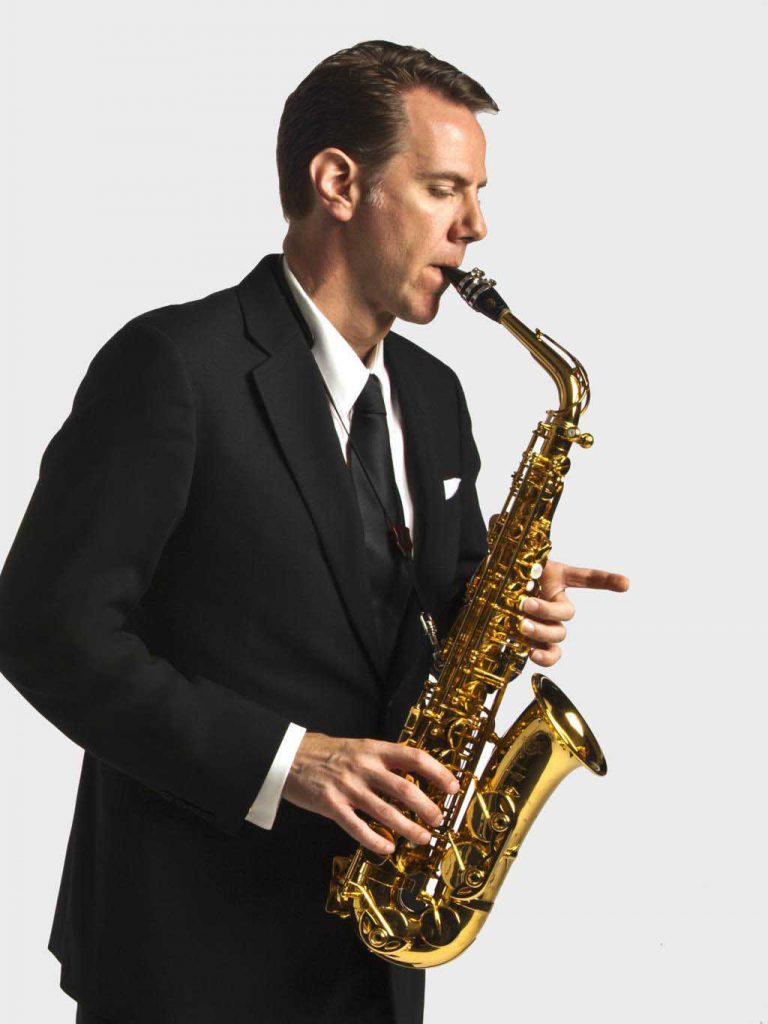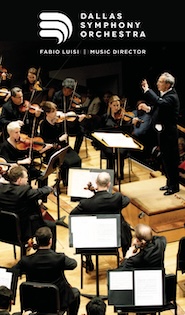Graf returns to lead Houston Symphony in Adams, Stravinsky and Mussorgsky

Timothy McAllister performed John Adams’ Saxophone Concerto with the Houston Symphony Thursday night.
Thursday evening, the Houston Symphony presented three works conducted by former music director Hans Graf at Jones Hall. Each of the three pieces was devoid of excess emotion, but for markedly different reasons.
Igor Stravinsky’s Symphonies of Wind Instruments opened the concert. Originally written in 1920, it was revised in 1947, and features only woodwinds and brass, sans strings and percussion. Stravinsky wrote the final portion, a hymn-like chorale, as his part of musical tributes by leading composers memorializing the death of Claude Debussy.
Stravinsky describes the nine-minute work as “an austere ritual which is unfolded in terms of short litanies between different groups of homogeneous instruments.” The word “symphonies” points to “a sounding together” rather than symphonic form. Symphonies is unified by three distinct tempos that are mathematically related to each other, and must be played non-rubato, or with inflexible tempos. Stravinsky said, “This music is not meant to ‘please’ an audience, nor to arouse its passions.”
Graf’s intellectual, objective approach was perfect for achieving that end. The conductor was clear and precise in controlling the multiple tempo and meter changes. The outstanding wind section of the Houston Symphony deftly maintained balance, pitch and ensemble while shifting from one instrumental grouping to another. Stravinsky made extensive use of the solo flute in disjunct melodic lines, effortlessly played by Aralee Dorough.
Composer John Adams turned 70 a week ago. His Saxophone Concerto, composed in 2013, was presented as part of that celebration this season. Adams grew up listening to his father play saxophone in swing bands, as well as recordings of John Coltrane, Eric Dolphy, and Wayne Shorter at home. These served as inspiration for the piece. Adams stipulated that the concerto be played in the jazz style of saxophone playing, as opposed to classical style.
Beginning with a quick sizzle then an exploding firecracker, the music serves up a seemingly endless stream of jazz samples. We hear snatches of the riffs that must be floating around in Adams’ head since his youth. While initially interesting, after some time the music becomes a sonic “Where’s Waldo?” with countless details obscuring the picture. The listener is left with the impression of a musical jigsaw puzzle where all the pieces fit together but the artistic value is in doubt. The end, after nearly half an hour, comes several minutes too late.
None of the perceived shortcomings were due to Timothy McAllister, the concerto’s dedicatee, who may be the only person on earth who can play the exceptionally difficult solo part. (His recording with the Saint Louis Symphony won the Grammy Award for Best Orchestral Performance in 2015.)
McAllister is an exceptional performer, with limitless technique and musical imagination. He manages to find expression in the smallest phrase or fleeting passage, moving throughout the wide range of the alto saxophone with ease. The last part of the first movement, marked Tranquillo, suave, took on a sexy and sensuous character often associated with the saxophone. The last movement had nonstop virtuoso playing that ended abruptly. Graf was efficient and precise in leading the multi-faceted orchestral accompaniment, which at times seemed like keeping kittens in a box.

Hans Graf
Those yearning for a melody after the first half were fulfilled by the featured work, Modest Mussorgsky’s Pictures at an Exhibition, in the orchestration by Maurice Ravel.
What was somewhat disconcerting about Thursday’s performance was an odd absence of color. Hans Graf, after expertly leading two challenging works on the first half, seemed out of his element. His downbeats in soft passages were so shallow the musicians ended up holding their breath, waiting to exhale, which perhaps contributed to several uncharacteristic pitch problems in the brass.
Graf seemed to be going through the motions rather than the emotions. Some tempos were so fast that the woodwinds scrambled to keep up. The strings were fairly colorless, and not all entrances were secure. The percussion, who did not play on the first half, were not uniformly aligned with the violins.
The last movement, “The Great Gate of Kiev,” was where the Houston Symphony of late finally emerged. It was a rousing conclusion and brought the Jones Hall audience to its feet, although there was not much to applaud in most of the Mussorgsky performance, as conducted by Graf.
The program will be repeated 8 p.m. Saturday and 2:30 p.m. Sunday. houstonsymphony.org

Posted Feb 27, 2017 at 2:56 pm by George
The problems you noted with the Mussorgsky/Ravel were not evident to me on Sunday. The only issues I heard were with the treacherously high notes for Tuba in the Bydlo part. David Kirk is one of the finest tuba players I have ever heard. So, this was unexpected. But, it was a very minor glitch in an otherwise brilliant performance. Mark Hughes was masterful, sounding like his teacher Adolph Herseth. And, our new principal clarinetist, Mark Nuccio continues to dazzle. His duet work with our principal bassoonist, Rian Craypo, during the Great Gate of Kiev was particularly beautiful and moving.
Maestro Graf is a superb conductor with an incredible ear. This was a beautifully balanced and paced performance of a work I know as well as anything, having grown up with Fritz Reiner/CSO performance as a favorite. I loved it.
Posted Feb 27, 2017 at 10:56 pm by Lawrence Wheeler
George, thanks for writing. I am happy that the performance you heard on Sunday had improved. Perhaps Graf had an off night in the Mussorgsky on Thursday. Mark Hughes, Mark Nuccio, and Rian Craypo are always worth mentioning, as they have been in prior reviews. While not specifically mentioned in this review, you should know the Bydlo solo was not played on the tuba by David Kirk, but on the euphonium by the bass trombonist. I believe when mentioning a musical defect it should not be misdirected, which is why Graf was the object of the criticism.